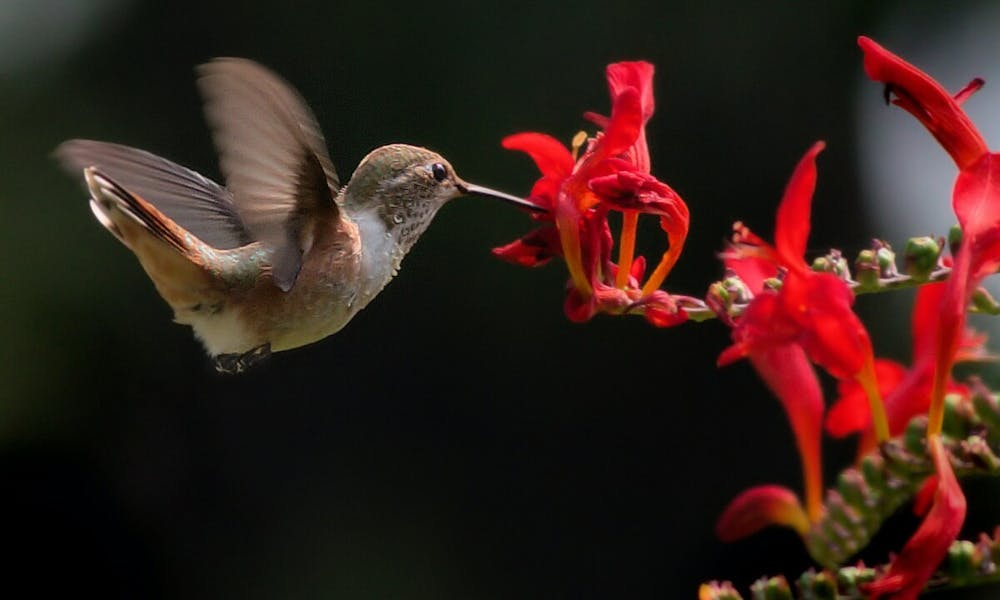Hummingbirds, known for their vibrant colors and rapid wingbeats, are a delightful sight in any garden. These tiny marvels of nature have a unique dietary preference: they are drawn to the nectar found in flowers. If you’re eager to attract these charming creatures to your garden or simply wish to create a hummingbird-friendly oasis, it’s essential to understand which flowers captivate their attention. In this comprehensive guide, we will explore the enchanting world of hummingbird-friendly flowers, revealing the varieties that will entice these delightful birds to visit your garden. From vibrant blooms to strategic planting, we will provide valuable insights and expert advice to help you create a haven that hummingbirds won’t be able to resist.
Understanding the Hummingbird’s Appetite: Nectar and More
To attract hummingbirds, it’s crucial to cater to their unique dietary needs. While nectar serves as their primary food source, hummingbirds also consume insects for protein and other essential nutrients. However, in this article, our focus will be on the floral enchantments that provide the nectar these birds crave.
Nectar-Rich Delights: Flowers that Hummingbirds Adore
- Trumpet Vine (Campsis radicans): The trumpet vine is a favorite among hummingbirds, thanks to its vibrant, trumpet-shaped flowers that produce copious amounts of nectar. This vigorous climber adds a touch of drama to any garden with its striking orange or red blossoms.
- Cardinal Flower (Lobelia cardinalis): The cardinal flower, with its bright red tubular blooms, is a magnet for hummingbirds. This native wildflower thrives in moist soil and adds a splash of bold color to garden borders or wetland areas.
- Bee Balm (Monarda spp.): Bee balm, also known as bergamot, boasts showy flowers in various shades of red, pink, and purple. Its unique shape and abundant nectar make it a hummingbird favorite. Bee balm’s fragrant foliage adds an extra element of interest to the garden.
- Red Hot Poker (Kniphofia spp.): With their fiery red, orange, or yellow spikes of flowers, red hot pokers create a stunning visual display and attract hummingbirds with their rich nectar. These flowers thrive in sunny locations and can add a touch of exotic flair to your garden.
- Columbine (Aquilegia spp.): Columbines, with their delicate and intricate blooms, offer a delicate allure that hummingbirds find irresistible. These flowers come in various colors, including shades of red, pink, and purple. Columbines prefer partial shade and can be a graceful addition to any garden.
- Salvia (Salvia spp.): Salvia, commonly known as sage, offers an array of vibrant colors and nectar-rich blooms that hummingbirds find irresistible. Varieties such as Salvia splendens and Salvia guaranitica are particularly popular among hummingbirds. Planting different species and cultivars ensures a continuous nectar supply throughout the growing season.
- Penstemon (Penstemon spp.): The tubular flowers of penstemon, also known as beardtongues, are perfectly suited to the hummingbird’s long, slender bill. These flowers come in various colors, including shades of red, pink, and purple. Penstemons thrive in sunny locations and well-drained soil.
- Honeysuckle (Lonicera spp.): Honeysuckles, with their fragrant and tubular flowers, are not only enticing to humans but also highly attractive to hummingbirds. These climbers provide abundant nectar and can be trained along fences or trellises to create vertical interest in the garden.
Beyond Blooms: Other Considerations to Attract Hummingbirds
- Strategic Planting: To create an appealing habitat for hummingbirds, consider planting flowers that bloom at different times throughout the year. This ensures a consistent supply of nectar and encourages hummingbirds to return regularly.
- Colorful Contrasts: Hummingbirds are particularly drawn to flowers with bright, vivid hues, especially shades of red, orange, and pink. Planting a diverse range of colorful flowers creates a visual feast and increases the chances of attracting these delightful birds.
- Native Plants: Native flowers have evolved alongside local wildlife, including hummingbirds. By incorporating native species into your garden, you provide a familiar and reliable food source for these birds, increasing the likelihood of their visitation.
- Water Features: Hummingbirds are not only drawn to nectar but also require a source of clean water for drinking and bathing. Installing a shallow bird bath or a small fountain can entice hummingbirds to linger in your garden, especially during hot summer months.
- Avoiding Pesticides: To create a hummingbird-friendly environment, it is crucial to minimize the use of pesticides and herbicides. These chemicals can harm not only the birds but also the insects that serve as an additional food source for hummingbirds.
Conclusion
Creating a garden that invites the whimsical presence of hummingbirds is a rewarding endeavor. By understanding their dietary preferences and selecting nectar-rich flowers, you can transform your outdoor space into a haven for these fascinating birds. From trumpet vines and bee balms to salvia and honeysuckles, the choices are vast and varied. By planting strategically, incorporating vibrant colors, and providing clean water sources, you increase the likelihood of attracting hummingbirds to your garden. So, unleash your inner botanist and embrace the enchanting world of hummingbird-friendly flowers, where nectar-filled blossoms and graceful visitors dance in harmony.
